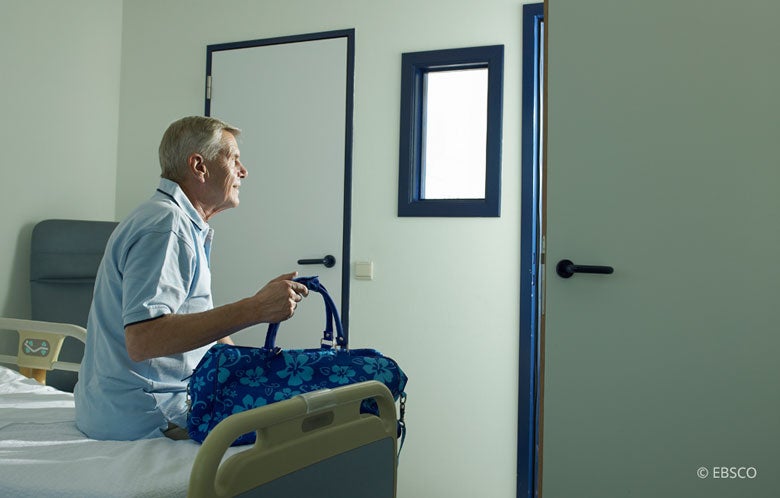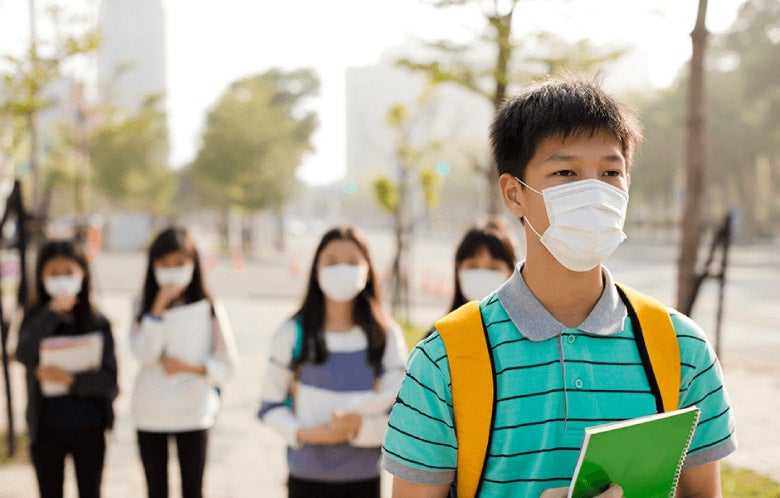In late 2019, a novel coronavirus emerged in China initiating a new disease known as COVID-19. Little did we know at the time that this virus, SARS-CoV-2, would sweep throughout the world causing more than 30 million infections and one million deaths since then.
SARS-CoV-2 is a respiratory pathogen that causes a wide range of illness from asymptomatic to life-threatening. Unfortunately, COVID-19 starts off like most other respiratory infections including influenza, making it a difficult clinical diagnosis. Patients typically report fever and cough. Other common symptoms include fatigue, myalgia, diarrhea and headache. Olfactory dysfunction may be a useful clinical pearl, as ageusia (loss of taste) and anosmia (loss of smell) appear highly specific.
COVID-19 is also associated with a variety of complications. About five days after symptom onset, some patients develop shortness of breath and dyspnea (trouble breathing) prompting medical attention. Rapid deterioration to acute respiratory distress syndrome (ARDS) requiring mechanical ventilation occurs in about 10 percent of patients who develop shortness of breath. Thromboembolism, myocardial ischemia and infarction, and acute kidney injury are other possible serious complications.
There is no specific therapy for COVID-19, though there are many ongoing trials. Corticosteroids may reduce mortality in patients with critical disease and remdesivir may shorten time to clinical improvement in hospitalized patients with severe COVID-19. Supportive care helps to relieve symptoms and should include support of vital organ functions in severe cases.
The definitive mortality rate of SARS-CoV-2 infection remains unknown. A systematic review of observational studies in China reported mortality of 10 percent in hospitalized patients and 34 percent in patients admitted to intensive care. During a pandemic, calculating mortality rate is only an estimation because case counts are informed by local and regional testing capacity and reporting policies.
Despite this uncertainty, we should not forget that most patients with COVID-19 survive. According to the Johns Hopkins Center for Systems Science and Engineering (CSSE) Coronavirus Dashboard, as of mid-September, more than 20 million patients have recovered. Patients who recuperate from COVID-19 are more likely to be younger and healthier, without significant comorbidities. However, it is becoming clear that patients who survive may incur long-lasting effects of their illness. Prolonged symptom duration and disability are not only common for patients with severe disease requiring mechanical ventilation, but also among patients with mild illness managed in an outpatient setting. In a survey among patients with symptomatic COVID-19 not severe enough to require hospitalization, 35 percent of patients had not returned to their usual state of health two to three weeks after diagnosis. Fatigue and cough were the most common persistent symptoms, and in ages over 50 years, obesity, and comorbid conditions were associated with prolonged illness.
Finally, it is also unclear whether infection with SARS-CoV-2 confers long-lasting immunity — an important consideration for public health as well as the use of convalescent plasma as therapy. Reports of true reinfection with genetically distinct SARS-CoV-2 strains (as opposed to recurrence of the same initial infecting strain) have started to emerge, suggesting that sterilizing immunity to natural infection may not be generated. Whether fully protective immunity is induced by vaccination remains to be assessed.
We have learned so much about the SARS-CoV-2 virus and COVID-19 in so little time, however there is still so much we do not know. Continue to check DynaMed for updates.



